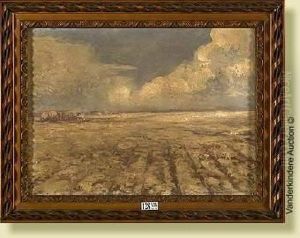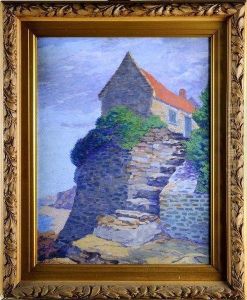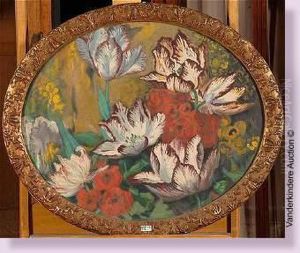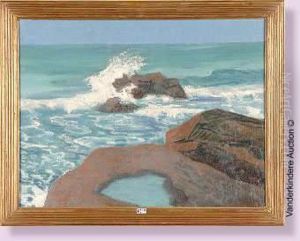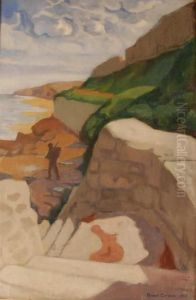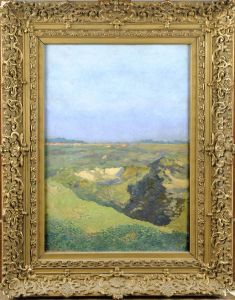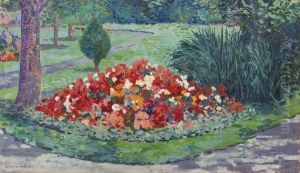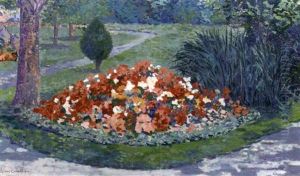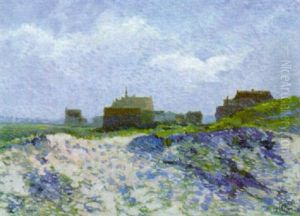Gisbert Combaz Paintings
Gisbert Combaz was a versatile Belgian artist, lawyer, and art professor known for his significant contributions to the Art Nouveau movement. Born in Antwerp on September 25, 1869, Combaz lived through a period of profound artistic evolution, where he distinguished himself not only as a painter but also as a graphic artist, poster designer, and decorator. His academic background in law, which he completed in 1891, did not deter his profound dedication to the arts, as he simultaneously pursued studies at the Academy of Fine Arts in Brussels.
Combaz's work is characterized by its intricate detail, vibrant colors, and the harmonious integration of figures and nature, hallmarks of the Art Nouveau style. He was adept in various mediums, including lithography, which he used to great effect in poster design, a burgeoning art form at the turn of the century. His posters, notably those created for exhibitions and cultural events, are celebrated for their dynamic compositions and the innovative use of color and line that capture the essence of the Art Nouveau movement.
Besides his graphic work, Combaz was also recognized for his contributions to the decorative arts. He designed tapestries, furniture, and ceramics, applying his unique aesthetic that blended symbolism with natural motifs. His academic career also flourished; he served as a professor of decorative arts in Brussels, where he influenced a new generation of artists and designers.
During World War I, Combaz's creativity took a patriotic turn as he was involved in producing propaganda art for the Belgian cause. His artworks from this period reflect a deep engagement with his national identity and the collective experience of the Belgian people during the conflict.
Gisbert Combaz's life and work were a testament to the vibrancy and innovation of the Art Nouveau movement in Belgium. He passed away on August 8, 1941, in Brussels, leaving behind a legacy that continues to be celebrated for its contribution to the development of modern art and design. Combaz's ability to traverse different artistic disciplines while maintaining a cohesive aesthetic philosophy exemplifies the interdisciplinary spirit of Art Nouveau and secures his place as one of its most distinguished practitioners.
